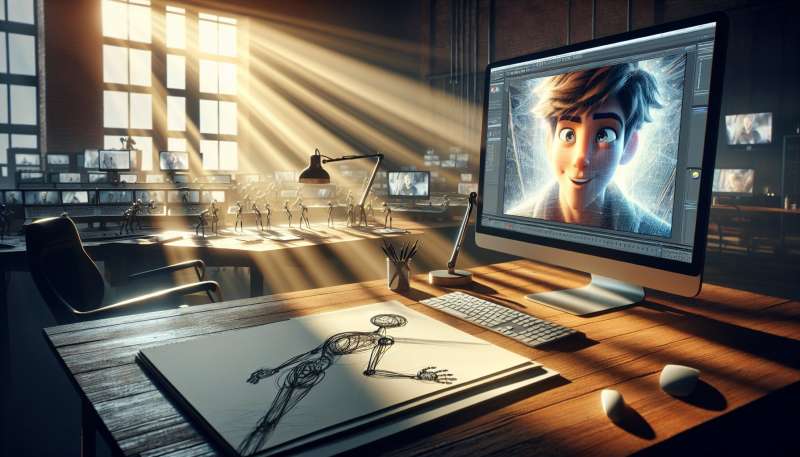
Animation Origins
Animation dates back to Paleolithic cave paintings, where sequences of images showed movement. The phenakistoscope (1832) was an early animation device, creating an illusion of motion from a series of static images.
First Animated Film
The first animated film, 'Fantasmagorie,' was created by Émile Cohl in 1908. It's a hand-drawn cartoon that runs for almost two minutes, exhibiting fluid motion and a playful narrative.
Technicolor Breakthrough
Disney's 'Flowers and Trees' (1932) was the first cartoon to use full Technicolor, revolutionizing animation with vibrant, appealing colors that drew audiences and set a new standard for quality.
TV Animation Boom
The 1950s saw animation leap to television, with shows like 'Crusader Rabbit' paving the way. This medium shift drastically increased animation's reach and frequency, changing production methods to manage time and budget constraints.
Digital Animation Era
The advent of computers in the 1990s transformed animation. Pixar's 'Toy Story' (1995) was the first feature-length film made entirely with computer-generated imagery (CGI), beginning a new era in animated storytelling.
Motion Capture Evolution
Motion capture, introduced in the late 1990s, blends human acting with animation, creating lifelike characters. It was popularized by films like 'Avatar' (2009) and has since become a staple in both animation and video game industries.
AI and Future Animation
Artificial intelligence is beginning to influence animation, with AI algorithms assisting in creating more natural movements, facial expressions, and even generating new content, hinting at a future of unprecedented creativity and efficiency in animation.
What depicted movement in cave paintings?
Series of static images
Colorful animal representations
Symbolic hunting scenes
Company